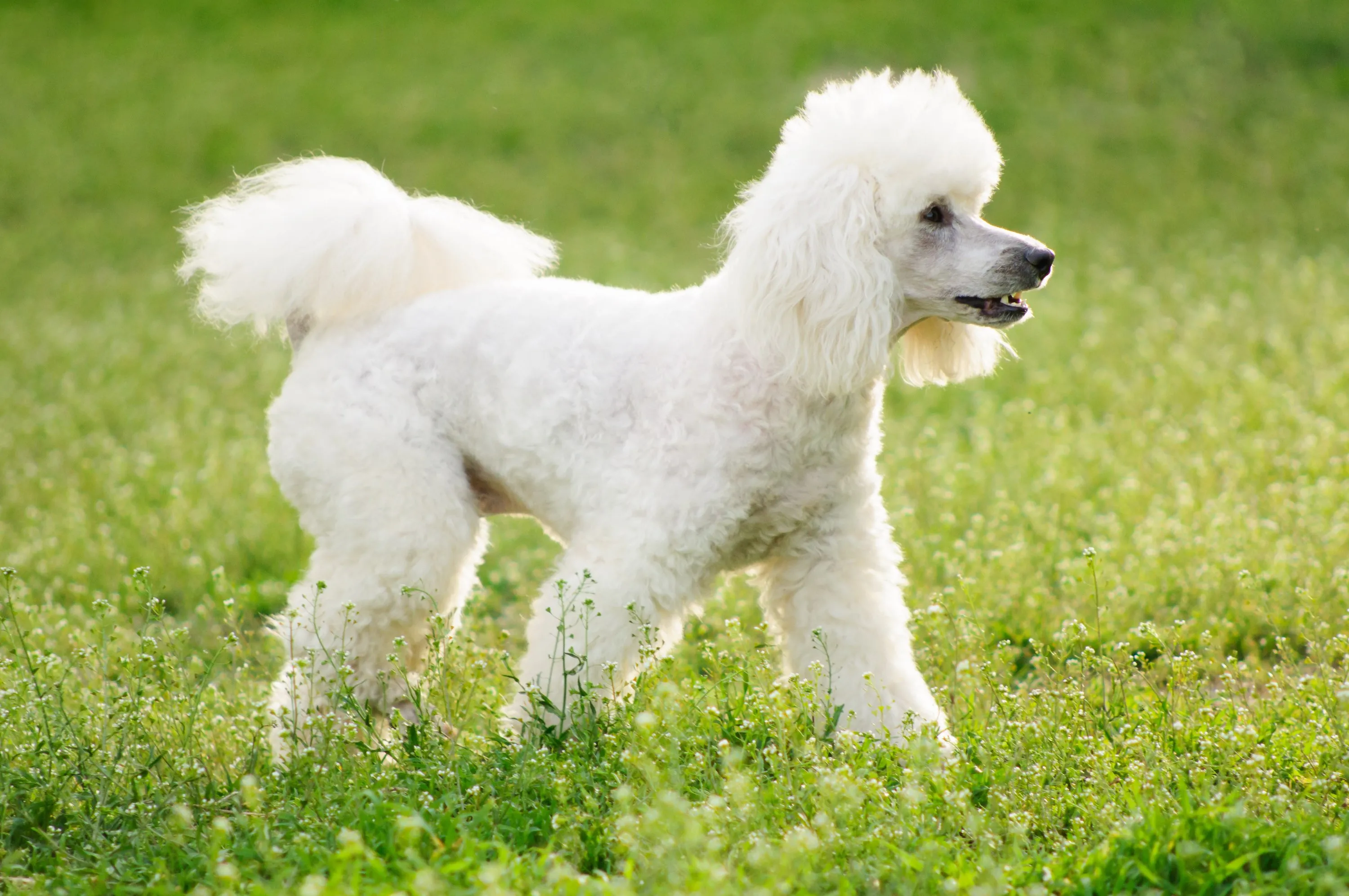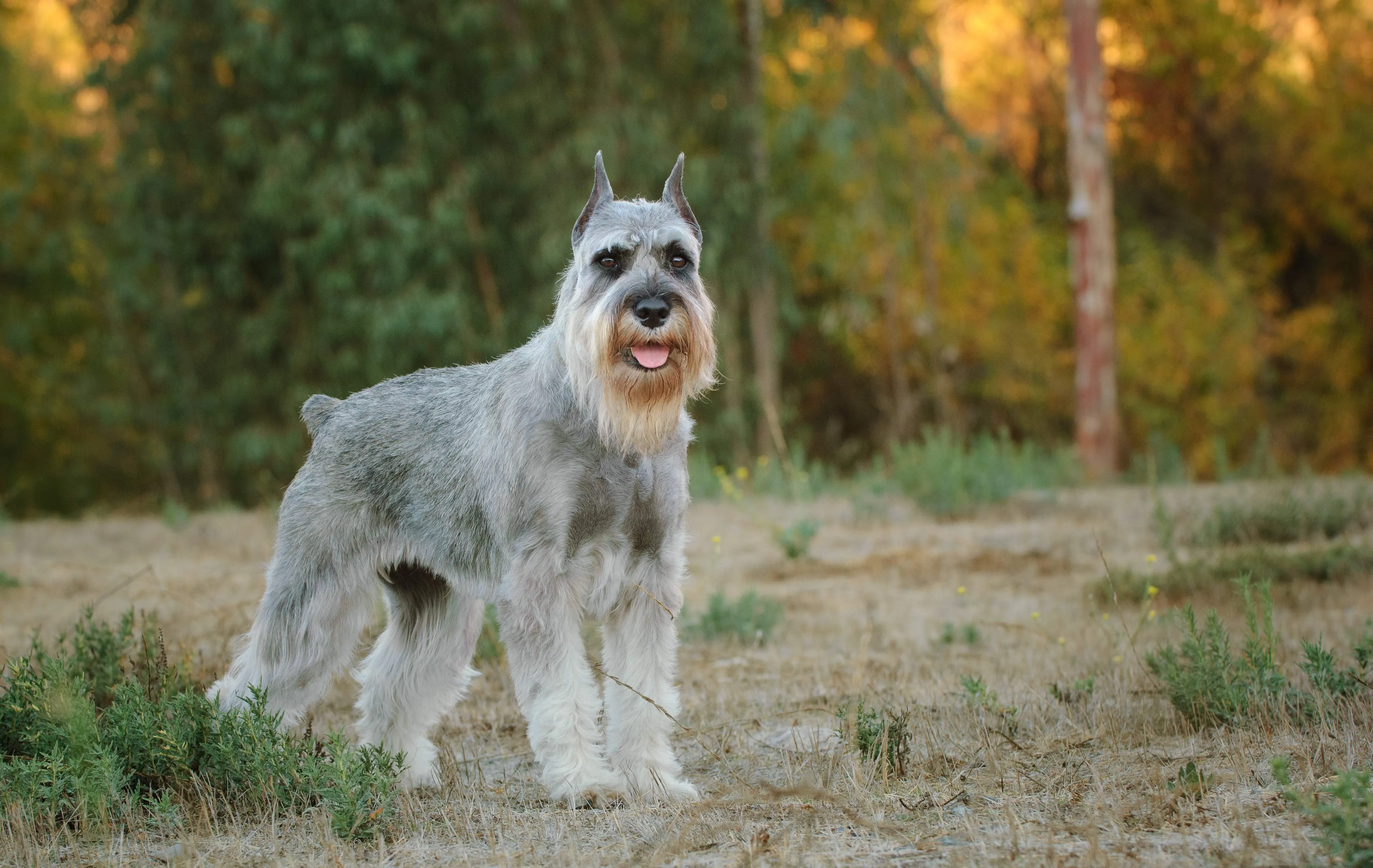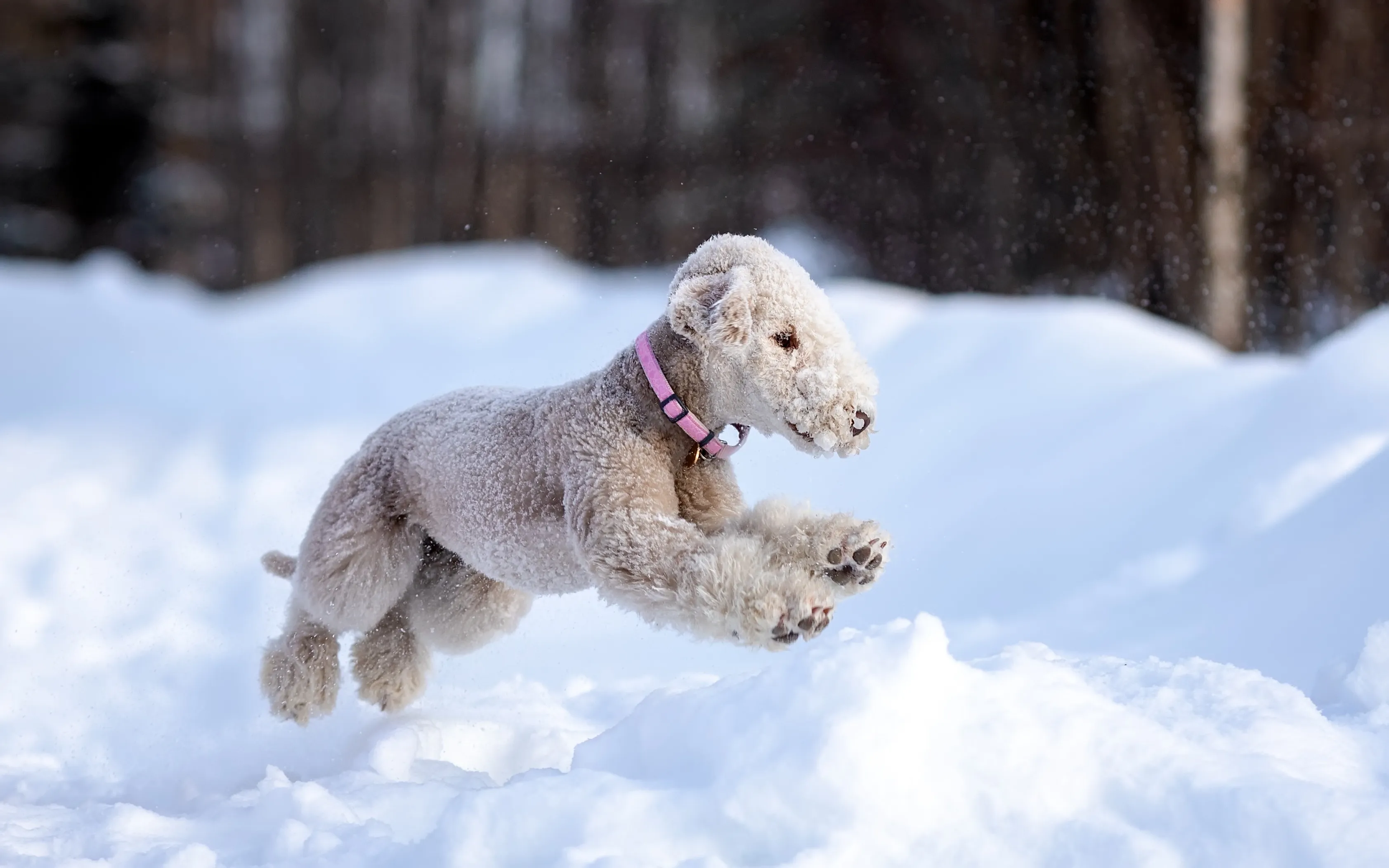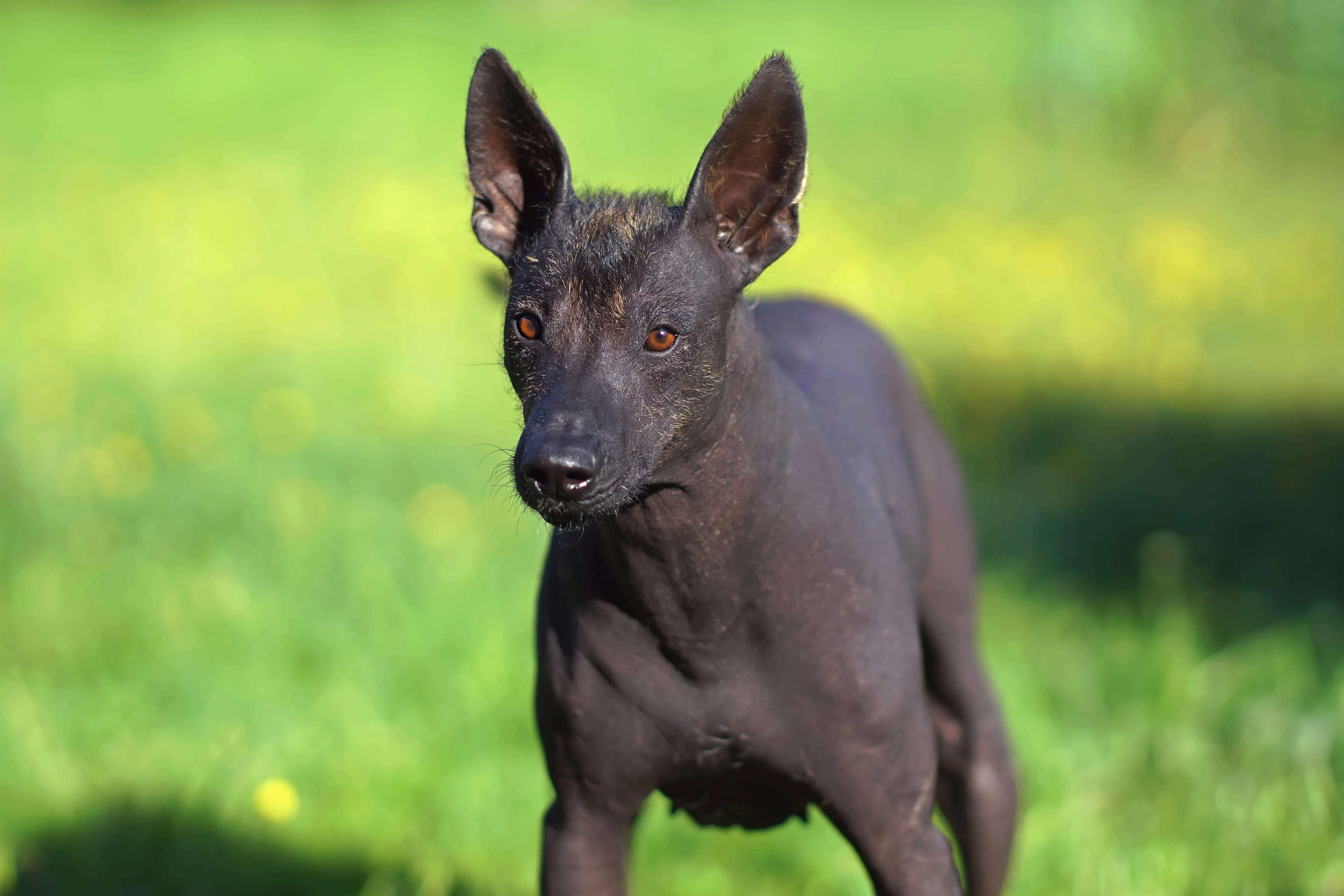For many dog lovers, the dream of bringing a furry friend home is often challenged by allergies. The thought of constant sneezing, itchy eyes, and congested airways can make pet ownership seem impossible. While the concept of a “100% hypoallergenic” dog is a myth—all dogs produce some level of dander, saliva, and urine that contain allergens—there’s good news for allergy sufferers. Many dog breeds are known for their low-shedding coats, which significantly reduce the amount of dander released into the environment, making them far more tolerable for sensitive individuals.
If you’re looking for a canine companion that offers a balanced size, adaptability, and a reduced risk of allergic reactions, then pictures of medium sized dogs that don’t shed are exactly what you need to explore. These breeds combine the convenience of a manageable size with the benefit of minimal shedding, fitting comfortably into various living situations, from active families to apartment dwellers. This comprehensive guide will introduce you to some of the best medium-sized, low-shedding dog breeds, provide insights into their unique characteristics, and offer essential tips for living with them happily and healthily. Discover your next furry family member that won’t leave a trail of hair or trigger your allergies! You can also explore options for medium and large dogs that dont shed if you prefer a slightly bigger companion.
Understanding “Non-Shedding” in Dogs
The term “non-shedding” can be misleading. All dogs shed to some extent, even if it’s just old or damaged hairs. However, breeds described as “non-shedding” or “hypoallergenic” typically have hair that grows continuously, much like human hair, rather than having a cycle of shedding and regrowth that releases large amounts of hair and dander. This means their loose hairs tend to get caught in their coats rather than falling out around your home.
The primary culprit behind dog allergies is usually dander—tiny flakes of skin that dogs shed, along with proteins found in their saliva and urine. These allergens become airborne or cling to surfaces, triggering reactions in sensitive individuals. Low-shedding dogs produce less dander, and because their hair traps what little dander they do produce, fewer allergens are released into the environment. This makes them a more suitable choice for people with dog allergies, though it’s important to remember that individual reactions can vary. Regular grooming, as we’ll discuss, is key to managing dander and keeping these coats healthy.
Why Choose a Medium-Sized Dog?
Medium-sized dogs offer an ideal balance for many households. They are typically:
- Versatile: Not too small to be fragile, nor too large to overwhelm smaller living spaces or require excessive amounts of food. They often adapt well to both houses with yards and spacious apartments.
- Manageable: Their size makes them easier to handle on walks, transport in vehicles, and manage during grooming sessions compared to very large breeds.
- Energetic yet adaptable: Many medium breeds possess a good amount of energy for outdoor adventures but are also content to relax indoors with their families, provided their exercise needs are met.
- Great family companions: Often sturdy enough to interact safely with children and other pets, and large enough to be substantial playmates without being intimidating.
Combining these advantages with a low-shedding coat creates a highly desirable companion for allergy sufferers seeking a well-rounded pet.
Top Medium-Sized Dog Breeds That Don’t Shed
Here’s a closer look at some fantastic medium-sized dog breeds known for their minimal shedding, complete with pictures to help you visualize your potential new family member.
1. Poodle (Standard & Miniature)
 A white Standard Poodle walking gracefully through green grass.
A white Standard Poodle walking gracefully through green grass.
Poodles are perhaps the quintessential “hypoallergenic” dog, renowned for their intelligence and distinctive curly coats. While Toy Poodles are small, Miniature Poodles (10-15 lbs, 10-15 inches) often bridge the gap to small-medium, and Standard Poodles (40-70 lbs, 15-24 inches) are squarely in the medium to large category, making them excellent choices for those seeking a medium-sized, non-shedding companion. Their dense, curly coat sheds minimally, trapping loose hairs and dander.
Poodles are highly intelligent and excel in obedience and agility, making them very trainable. They require regular grooming, including brushing several times a week and professional clipping every 4-6 weeks, to prevent matting and maintain their coat health. Standard Poodles were originally bred for hunting and require significant exercise, while Miniature Poodles are also active and enjoy playtime. All Poodle varieties thrive on mental stimulation and companionship.
2. Standard Schnauzer
 A salt and pepper colored Standard Schnauzer standing alert in a field, looking attentive.
A salt and pepper colored Standard Schnauzer standing alert in a field, looking attentive.
The Standard Schnauzer is a robust and spirited medium-sized breed, typically weighing between 30-50 pounds and standing 17.5-19.5 inches tall. Known for their distinctive wiry coat, bushy eyebrows, and beard, they shed very little. Their coat requires regular brushing (2-3 times a week) and professional stripping or clipping every few months to maintain its texture and non-shedding qualities.
Standard Schnauzers are intelligent, strong-willed, and loyal, making them excellent watchdogs and family protectors. They possess a keen intellect and a playful nature, needing at least an hour of vigorous exercise daily, which could include long walks, runs, or engaging in dog sports. They thrive on having a “job” to do and are best suited for active families who can provide consistent training and socialization.
3. Portuguese Water Dog
 A black and white Portuguese Water Dog wearing a red maple leaf bandana, standing in front of calm water.
A black and white Portuguese Water Dog wearing a red maple leaf bandana, standing in front of calm water.
Originally bred to assist fishermen in Portugal, the Portuguese Water Dog is a highly energetic and intelligent medium-sized breed. They typically weigh 35-60 pounds and stand 17-23 inches tall. Their thick, wavy or curly single coat is practically non-shedding, making them a superb choice for allergy sufferers. This breed loves water and requires regular exercise, including swimming, fetching, and long walks, to keep them happy and healthy.
Portuguese Water Dogs are known for their lively and affectionate personalities. They are highly trainable and eager to please, making them good candidates for various dog sports and activities. Their coat needs regular brushing to prevent matting and professional grooming every 6-8 weeks. They form strong bonds with their families and thrive on companionship and active engagement. These athletic dog breeds that don t shed are perfect for active individuals and families.
4. Lagotto Romagnolo
 Two Lagotto Romagnolo dogs with curly coats lying in dirt, staring intently at the camera.
Two Lagotto Romagnolo dogs with curly coats lying in dirt, staring intently at the camera.
The Lagotto Romagnolo, an ancient Italian breed, is a charming and distinctive medium-sized dog, weighing 24-35 pounds and standing 16-19 inches tall. Known as the world’s only purebred truffle hunter, they have a thick, woolly, non-shedding coat that protected them from cold water during their original role as water retrievers.
Lagotti are intelligent, active, and affectionate dogs that are typically good with children and other pets, making them excellent family dogs. Their curly coat requires regular trimming and brushing to prevent matting, but it doesn’t shed much. They need moderate daily exercise and plenty of mental stimulation to satisfy their working dog instincts. Their cheerful disposition and robust nature make them a delightful, low-allergen addition to an active home.
5. Irish Water Spaniel
 A profile view of a brown Irish Water Spaniel with a curly coat and a clean-shaven face and tail.
A profile view of a brown Irish Water Spaniel with a curly coat and a clean-shaven face and tail.
The Irish Water Spaniel is a distinguished and energetic water dog, ranking among the larger medium-sized breeds. They typically weigh 55-68 pounds and stand 22-24 inches tall. Their dense, crisp, liver-colored curly coat is known for being water-repellent and minimal shedding, making them a suitable choice for allergy sufferers.
These intelligent and friendly dogs are highly trainable and possess a playful, somewhat clownish personality. As a sporting breed, they have high energy levels and require substantial daily exercise, including vigorous playtime, long walks, or swimming. Their coat needs regular brushing and professional grooming to prevent tangles and keep it in top condition. With proper exercise and mental engagement, the Irish Water Spaniel makes a loyal and entertaining family companion.
6. Soft Coated Wheaten Terrier
 A Soft Coated Wheaten Terrier with a wavy, wheaten-colored coat sitting calmly on a log in a natural setting.
A Soft Coated Wheaten Terrier with a wavy, wheaten-colored coat sitting calmly on a log in a natural setting.
The Soft Coated Wheaten Terrier is a joyous and affectionate medium-sized Irish breed, typically weighing 30-40 pounds and standing 17-19 inches tall. As their name suggests, they have an incredibly soft, silky, wavy coat that is unique for terriers and sheds very little. This makes them a popular choice for families looking for a low-shedding dog with a lively personality.
Wheatens are known for their “Wheaten greetin'” – an enthusiastic jump and lick to welcome their loved ones. They are intelligent, playful, and maintain a high energy level throughout their lives, requiring ample exercise and mental stimulation to prevent boredom and destructive behaviors. Their coat needs daily brushing to prevent matting and professional grooming every 4-6 weeks. With their cheerful disposition and moderate size, Wheatens are a wonderful addition to active households.
7. Bedlington Terrier
 A white Bedlington Terrier with its characteristic lamb-like appearance running through a snowy landscape.
A white Bedlington Terrier with its characteristic lamb-like appearance running through a snowy landscape.
Often described as “a lamb in dog’s clothing,” the Bedlington Terrier is a distinctive small-to-medium breed, typically weighing 17-23 pounds and standing 15-17.5 inches tall. Their unique curly, linty coat sheds very little and gives them their iconic appearance with a distinctive topknot and pom-pom ear tufts.
Bedlington Terriers are affectionate, charming, and intelligent dogs that thrive on being part of their family. They can be playful and energetic, requiring moderate daily exercise and consistent training. Their coat needs regular brushing and professional grooming to maintain its unique appearance and prevent matting. While generally loving, they can have a terrier’s stubborn streak, making early socialization and positive reinforcement training important. They are perfect for those seeking a medium-sized dog that is also a fantastic best medium sized family dog that doesn t shed.
8. Xoloitzcuintli (Mexican Hairless Dog – Miniature & Standard)
 A sleek black hairless Xoloitzcuintli dog standing gracefully in green grass.
A sleek black hairless Xoloitzcuintli dog standing gracefully in green grass.
The Xoloitzcuintli (pronounced Sho-lo-eet-s-kweent-lee) is an ancient and rare breed known as the Mexican Hairless Dog. This breed comes in three sizes: Toy, Miniature, and Standard. The Miniature Xolo (15-30 lbs, 14-18 inches) and Standard Xolo (30-55 lbs, 18-23 inches) perfectly fit the medium-sized criteria for those seeking pictures of medium sized dogs that don’t shed. While some Xolos are completely hairless, others have a short, smooth coat, both of which are considered hypoallergenic.
Xolos are calm, intelligent, and deeply loyal to their families. They can be reserved around strangers but are very affectionate with their loved ones. Their hairless variety requires specific skin care, including sunscreen and moisturizing, while the coated variety needs minimal grooming. They have moderate exercise needs, enjoying walks and playtime. Their unique appearance and loving nature make them a fascinating and low-allergen companion.
9. Peruvian Inca Orchid (Medium)
 A slender Peruvian Inca Orchid dog with minimal hair, showing off its distinctive skin and tufts of hair.
A slender Peruvian Inca Orchid dog with minimal hair, showing off its distinctive skin and tufts of hair.
Another rare and ancient hairless breed, the Peruvian Inca Orchid (PIO) comes in small, medium, and large varieties. The medium size (18-26 lbs, 16-20 inches) is an excellent fit for those looking for a unique, low-shedding medium dog. Like the Xolo, PIOs can be hairless or coated (with a short, single coat), both of which are considered hypoallergenic. They are the national dog of Peru, prized for their elegance and calm demeanor.
PIOs are generally noble, affectionate, and protective of their families. They require consistent socialization and training from an early age. Their skin needs protection from the sun and cold, while the coated variety requires minimal brushing. They have moderate exercise needs, enjoying daily walks and active play.
10. Barbet
 A close-up shot of a curly red Barbet dog's face, highlighting its shaggy, woolly coat and beard.
A close-up shot of a curly red Barbet dog's face, highlighting its shaggy, woolly coat and beard.
The Barbet (pronounced “bar-bay”), meaning “beard” in French, is a cheerful and rare water dog with a characteristic shaggy, woolly coat. This medium to large breed typically weighs 35-65 pounds and stands 20-24 inches tall. Their dense, curly coat is designed for water work and is low-shedding, making them a good option for allergy sufferers.
Barbet dogs are known for their joyful and friendly temperament. They are intelligent, highly trainable, and devoted companions. As water dogs, they love to swim and require plenty of exercise and mental stimulation to be happy and well-behaved. Their distinctive coat needs regular brushing (2-3 times a week) and occasional trimming to prevent matting.
11. Doodle Breeds (Labradoodle, Goldendoodle, Aussiedoodle, Schnoodle, Whoodle, Bernedoodle)
“Doodle” breeds are crosses between Poodles and other dog breeds, often developed to combine the Poodle’s low-shedding coat with the desirable traits of the other parent breed. While their shedding can vary depending on which parent’s coat genes they inherit, many Doodles are low-shedding, especially those with curlier, more Poodle-like coats. Many of these popular crosses are available in medium sizes, making them prime candidates for your search.
- Labradoodle (Medium): A cross between a Labrador Retriever and a Poodle. Medium varieties typically weigh 30-45 pounds and stand 17-20 inches tall. They are intelligent, friendly, and make excellent family pets. Their coat can range from wavy to curly and requires regular brushing and professional grooming.
- Goldendoodle (Medium): A blend of Golden Retriever and Poodle. Medium Goldendoodles often weigh 30-45 pounds and are 17-20 inches tall. Known for their friendly nature, intelligence, and a coat that can be wavy or curly. Frequent grooming is essential to prevent matting.
- Aussiedoodle (Medium): A cross of an Australian Shepherd and a Poodle. Medium Aussiedoodles are typically 30-40 pounds and 18-21 inches tall. They are highly intelligent and energetic, inheriting strong working instincts from both parents. They require substantial exercise and mental stimulation. Their coat needs regular brushing.
- Schnoodle (Medium): A mix of a Schnauzer and a Poodle. Medium Schnoodles can range from 20-60 pounds, depending on the Schnauzer and Poodle parents used. Their coat can be curly or wavy and is always low-shedding. They are known for being intelligent, playful, and devoted.
- Whoodle (Medium): A delightful cross between a Soft Coated Wheaten Terrier and a Poodle. Whoodles are often medium-sized, typically weighing 20-40 pounds. They inherit intelligence and an affectionate nature from both parent breeds, with a soft, wavy to curly coat that sheds very little.
- Bernedoodle (Mini & Standard – Medium Variants): A mix of a Bernese Mountain Dog and a Poodle. While many Bernedoodles are large, “Mini Bernedoodles” can be medium-sized (25-49 lbs), making them a suitable option. They are beloved for their friendly, affectionate nature and gentle demeanor, making them popular family pets. Their coat types vary, requiring regular grooming.
All Doodle breeds require consistent grooming to prevent matting, especially those with curlier coats, which necessitates regular brushing and professional clipping. Their temperaments vary but generally lean towards being intelligent, friendly, and good family dogs, provided their exercise and training needs are met.
Grooming Essentials for Medium-Sized, Non-Shedding Dogs
While low-shedding dogs are great for allergy sufferers, they are often high-maintenance in terms of grooming. Their continuously growing hair doesn’t fall out on its own, meaning it can quickly become matted and tangled if not properly cared for.
- Regular Brushing: This is paramount. Depending on the breed and coat type, daily or every-other-day brushing is often necessary. A good quality slicker brush and a metal comb are essential tools to remove loose hairs and prevent mats. For example, a Poodle or a Wheaten Terrier will need dedicated daily brushing.
- Professional Grooming: Most low-shedding breeds require professional clipping or hand-stripping every 4-8 weeks. This keeps their coat at a manageable length, prevents extensive matting, and helps keep them clean. Budgeting for these regular grooming appointments is a must.
- Bathing: Bathe your dog every 4-6 weeks using a dog-specific shampoo. Regular bathing helps to wash away dander and loose hair, further reducing allergens. Some owners of highly allergic individuals use specialized dander-reducing shampoos.
- Nail Trims and Ear Cleaning: Don’t forget these vital aspects of grooming. Regular nail trims prevent discomfort and potential health issues, while routine ear cleaning can help prevent ear infections, especially in breeds with floppy ears.
Investing time and effort in grooming not only keeps your low-shedding dog looking great but also plays a crucial role in minimizing allergens in your home environment.
Living with a Low-Shedding Medium Dog
Bringing a low-shedding dog into your life offers many benefits, but managing allergies also involves lifestyle adjustments for the human members of the family.
Managing Allergens in Your Home
Even with a low-shedding dog, maintaining a clean living environment is essential to minimize allergens.
- Regular Cleaning: Vacuum frequently with a HEPA-filter vacuum cleaner. Dust surfaces regularly with a damp cloth. Wash bedding (both yours and your dog’s) weekly in hot water.
- Air Purification: Consider using air purifiers with HEPA filters in main living areas and bedrooms. These can significantly reduce airborne allergens.
- Designated “Pet-Free” Zones: Designate certain areas, like bedrooms, as pet-free zones. This gives allergy sufferers a space where allergen levels are kept as low as possible.
- Wash Hands: Always wash your hands after petting your dog, and avoid touching your face before doing so.
Health & Wellness Considerations
Beyond coat care, ensuring your dog’s overall health is crucial for both their well-being and managing allergens.
- Regular Veterinary Check-ups: Ensure your dog receives regular vet visits for vaccinations, parasite control, and general health screenings. A healthy dog generally produces less dander than a dog with skin issues.
- Breed-Specific Health: Be aware of any health predispositions specific to your chosen breed. For example, some Doodles might inherit joint issues, while Poodles can be prone to certain eye conditions.
- Nutrition: A high-quality diet supports healthy skin and coat, potentially reducing dry skin and dander production.
- Consult Your Doctor: If you or a family member has severe allergies, it’s vital to consult with a healthcare provider. They can offer advice on managing symptoms, including medication, nasal sprays, or immunotherapy (allergy shots), to help you live comfortably with your pet. Avoiding direct contact with a dog’s saliva or urine is also important, as these are sources of allergens.
Exercise and Mental Stimulation Needs
Medium-sized dogs, especially those from working or sporting backgrounds, typically have moderate to high energy levels.
- Daily Exercise: Ensure your dog gets adequate physical activity tailored to their breed’s needs. This could include brisk walks, jogging, playing fetch, or trips to a dog park. This not only keeps them physically fit but also helps prevent boredom and destructive behaviors.
- Mental Engagement: Many of these intelligent breeds thrive on mental challenges. Incorporate puzzle toys, training sessions, and interactive games into their routine. This keeps their minds sharp and happy.
- Socialization: Proper socialization from a young age is crucial for any dog, especially for breeds with strong personalities. It helps them develop into well-adjusted, confident companions.
Conclusion
Choosing a dog is a significant decision, and for those with allergies, it requires careful consideration. The search for pictures of medium sized dogs that don’t shed leads to a wonderful array of breeds that offer companionship, joy, and a lower allergen footprint. From the intelligent Poodle and the spirited Standard Schnauzer to the water-loving Portuguese Water Dog and the charming Soft Coated Wheaten Terrier, there’s a low-shedding medium-sized dog out there for nearly every lifestyle.
Remember that while these breeds minimize shedding and dander, no dog is truly 100% hypoallergenic. Diligent grooming, a clean home environment, and personal allergy management are all crucial components of a successful and happy life with your canine companion. By understanding their unique needs and committing to responsible pet ownership, you can experience the profound bond and unconditional love that a medium-sized, low-shedding dog brings, without the constant sniffles. Take the time to research, meet different breeds, and find the perfect match for your family’s needs. If you’re also considering other low-shedding options, check out our guide to the top ten dog breeds that dont shed for a broader perspective.
References:
- American Kennel Club (AKC) – Breed Information. (www.akc.org)
- The National Institute of Environmental Health Sciences (NIEHS) – Pet Allergens. (www.niehs.nih.gov)
- PetMD – Dog Breed Information and Health Articles. (www.petmd.com)
